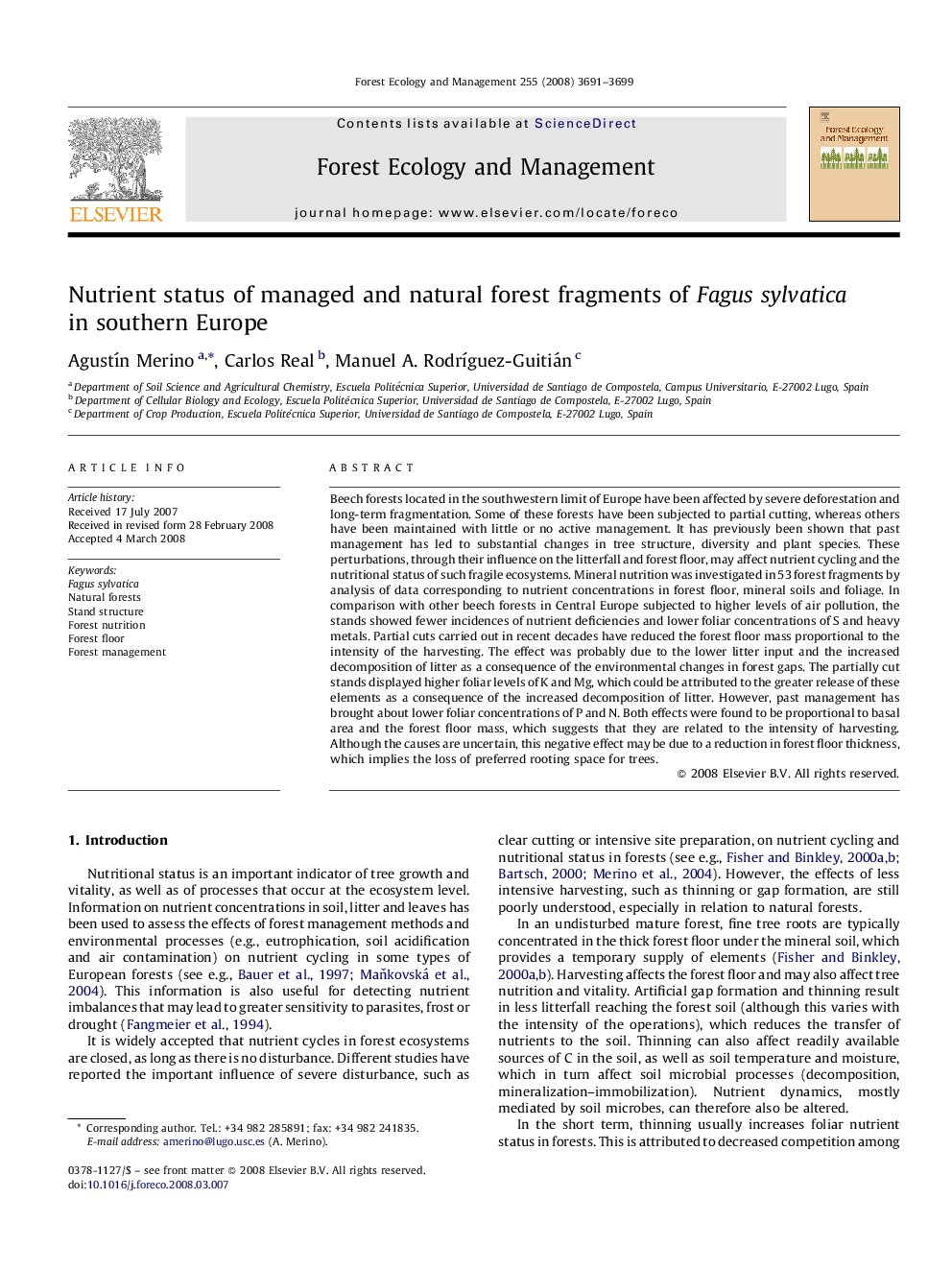| کد مقاله | کد نشریه | سال انتشار | مقاله انگلیسی | نسخه تمام متن |
|---|---|---|---|---|
| 89313 | 159339 | 2008 | 9 صفحه PDF | دانلود رایگان |

Beech forests located in the southwestern limit of Europe have been affected by severe deforestation and long-term fragmentation. Some of these forests have been subjected to partial cutting, whereas others have been maintained with little or no active management. It has previously been shown that past management has led to substantial changes in tree structure, diversity and plant species. These perturbations, through their influence on the litterfall and forest floor, may affect nutrient cycling and the nutritional status of such fragile ecosystems. Mineral nutrition was investigated in 53 forest fragments by analysis of data corresponding to nutrient concentrations in forest floor, mineral soils and foliage. In comparison with other beech forests in Central Europe subjected to higher levels of air pollution, the stands showed fewer incidences of nutrient deficiencies and lower foliar concentrations of S and heavy metals. Partial cuts carried out in recent decades have reduced the forest floor mass proportional to the intensity of the harvesting. The effect was probably due to the lower litter input and the increased decomposition of litter as a consequence of the environmental changes in forest gaps. The partially cut stands displayed higher foliar levels of K and Mg, which could be attributed to the greater release of these elements as a consequence of the increased decomposition of litter. However, past management has brought about lower foliar concentrations of P and N. Both effects were found to be proportional to basal area and the forest floor mass, which suggests that they are related to the intensity of harvesting. Although the causes are uncertain, this negative effect may be due to a reduction in forest floor thickness, which implies the loss of preferred rooting space for trees.
Journal: Forest Ecology and Management - Volume 255, Issue 11, 15 June 2008, Pages 3691–3699